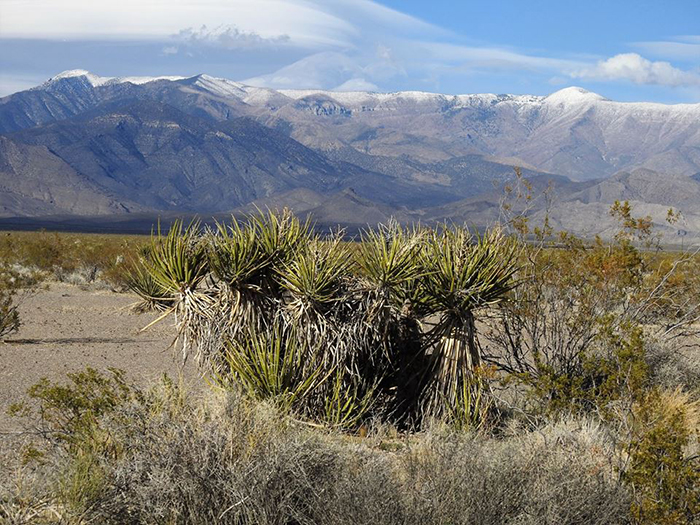Conservationists raise concerns about solar project near Pahrump as the BLM starts public comment

The Bureau of Land Management opened a public comment period Friday for a Clark County solar project that would bring 250 megawatts of clean energy onto the Western grid but faces opposition from conservationists. The BLM, which manages more than 65 percent of the state’s land, said the project will span roughly 9,000 acres of public land about 10 miles from Pahrump.
The BLM announced the public comment period as it starts an environmental analysis that will look at the project’s potential disturbances, including its impact on threatened species, such as the desert tortoise, recreation and water resources. The announcement comes as the BLM and other agencies are reviewing large-scale solar and wind projects on public lands across the Mojave Desert. These renewable projects have split conservation groups and clean energy groups. Clean energy groups want to see more renewables come online but conservationists worry the renewable projects, if improperly located, will disrupt sensitive desert ecosystems.
In April, several conservationists voiced concerns to the BLM about a proposed wind project near Searchlight. Developers tend to favor the area for the same reasons that conservationists want to keep it closed off — there are large swaths of available, undisturbed land.
It’s likely that conservationists will file similar public comments for the Yellow Pine Solar Project, the proposal now moving through the BLM process. Kevin Emmerich, co-founder of Basin and Range Watch, said the proposed solar farm could interfere with desert tortoise recovery. Although the solar field is expected to take up only about a third of the 9,000 acres, Emmerich said in a statement that the entire site was a translocation site for desert tortoise.
Since the desert tortoise is listed under the Endangered Species Act, developers are required to mitigate the effects of construction on the tortoise. Accordingly, when tortoises are displaced by development in Southern Nevada, they are sometimes relocated to a translocation area, an open space that has been approved by federal land managers.
“The region contains important desert tortoise habitat and is recovering nicely from a recent drought,” Emmerich said. “It seems ironic that the BLM will now allow NextEra Energy to bulldoze the same region for solar panels that they selected to help recover the species."
Steve Stengel, a spokesman for NextEra Energy, the company behind the Yellow Pine project, pushed back on those claims.
"Our proposed project is next to one of the translocation spots," he said. "It’s not in it."
Stengel added that NextEra would participate in a desert tortoise mitigation program if the project proceeds.
When the project was first proposed in 2016, NextEra told the Pahrump Valley Times that it chose the location has high solar potential and is close to transmission lines.
Updated at 2:48 p.m. on Friday, June 1 to include a statement from NextEra Energy.
